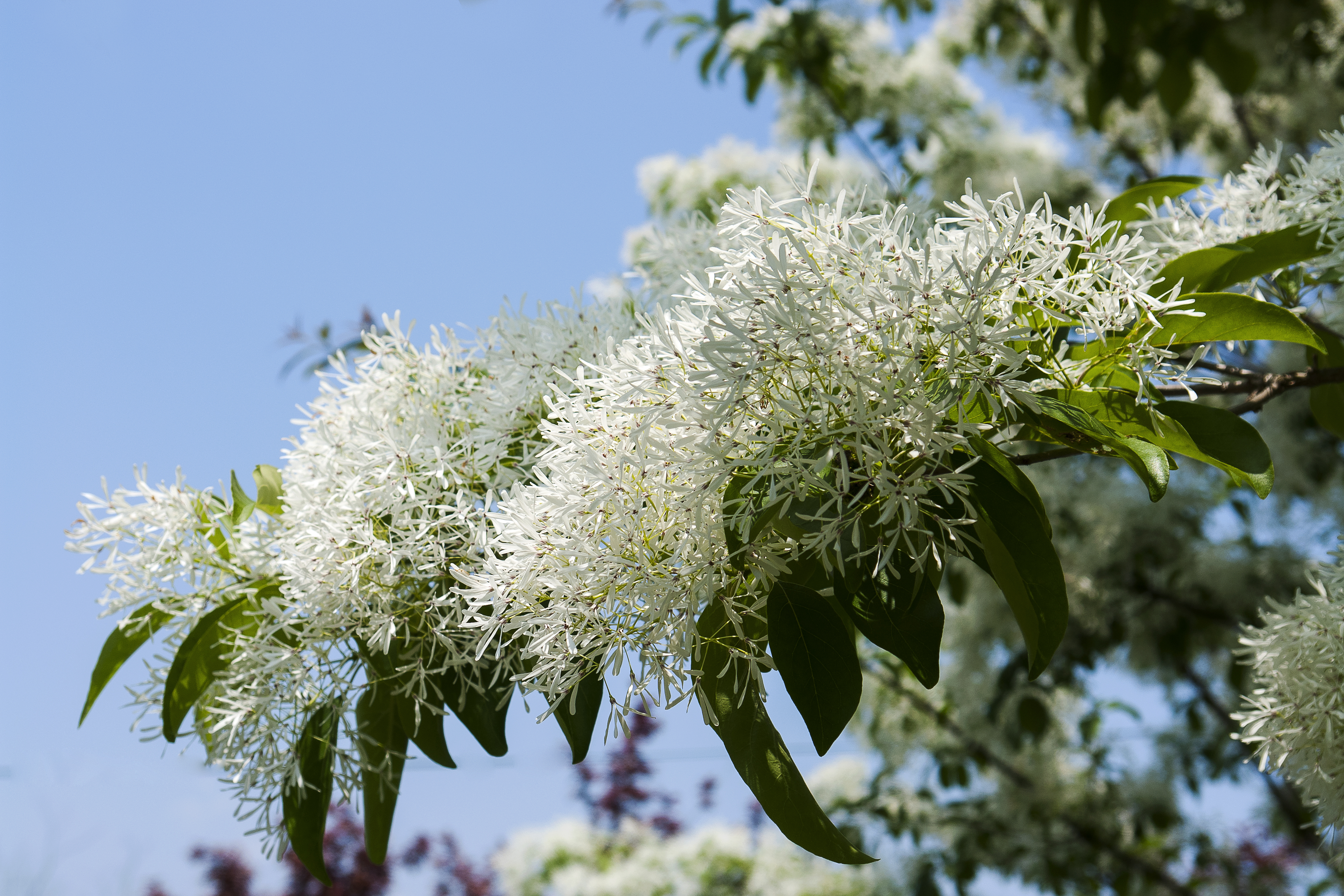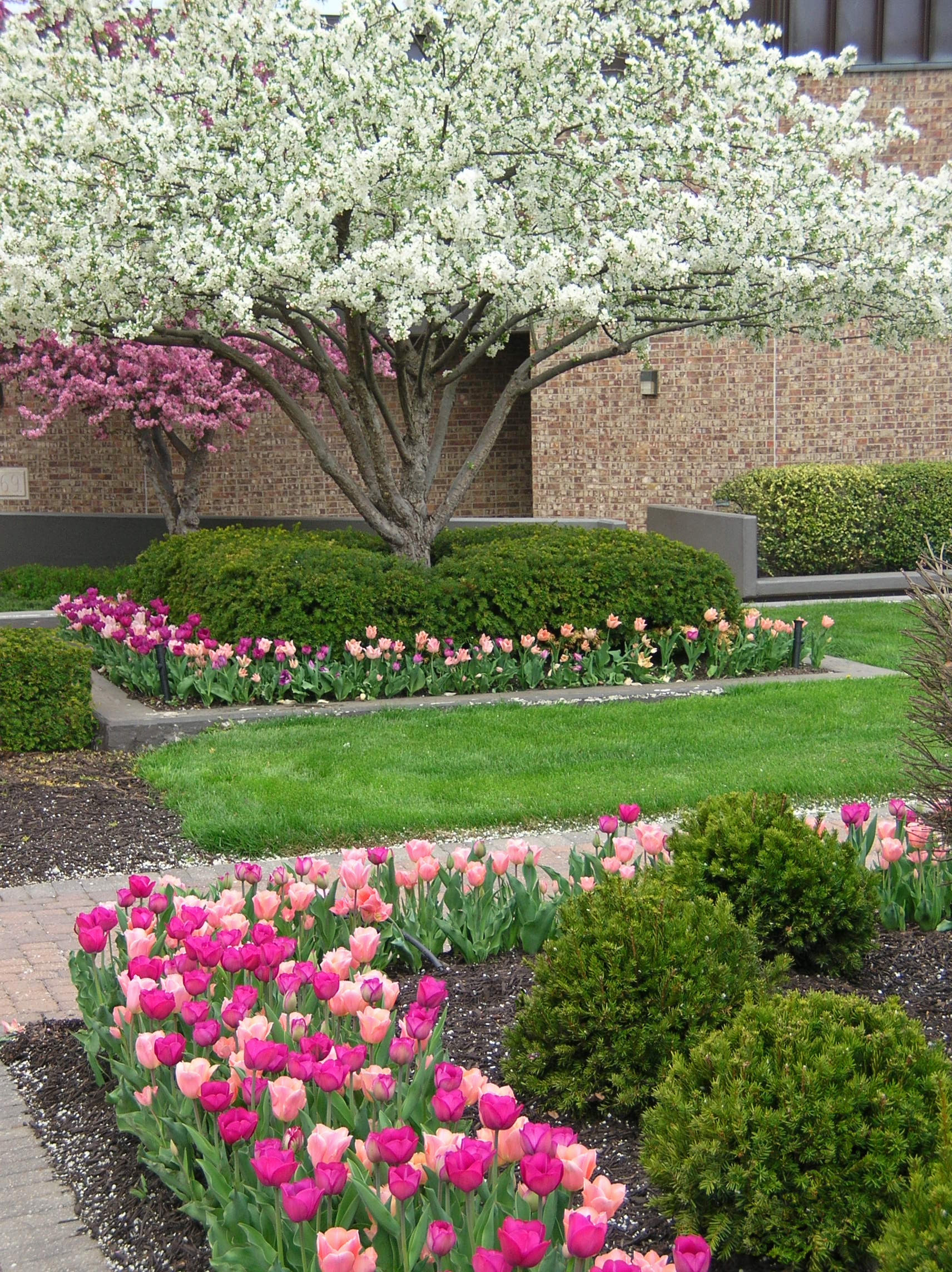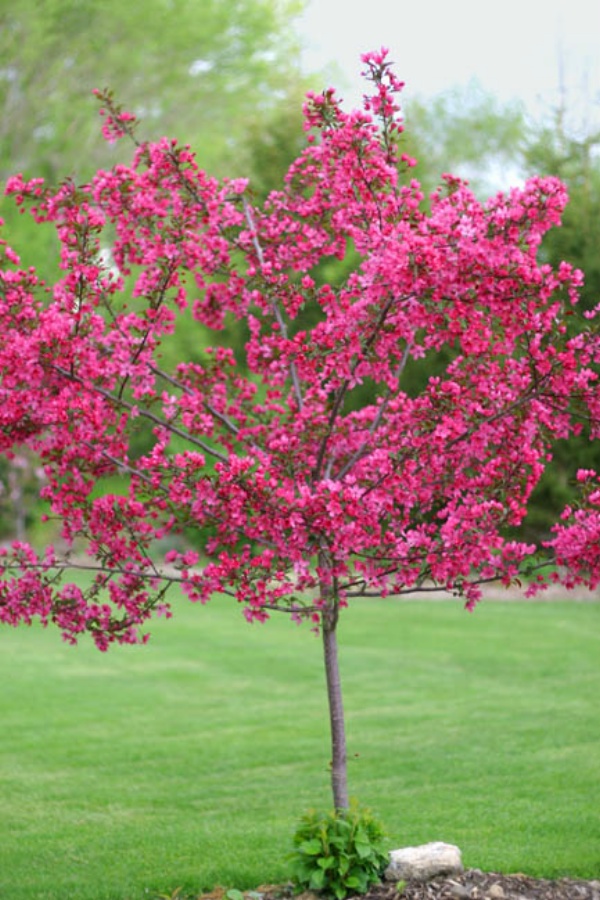The weather has not been great here lately. The temperatures have dropped, the sky has been a depressing shade of cloudy grey and the wind has been chilly. I have to admit that the older I get, the more I avoid going outside to do those necessary chores on ourngloomy days. Instead, I spend a lot of time inside, staring out my back windows thinking about new landscaping. Spurred on by planting spring flowering bulbs recently, my thoughts have now turned to figuring out where I can still plant some spring flowering trees this fall. I have visions of an extravaganza of color in the spring and a bounty of berries for the birds next fall.
Fall is the best time of year to plant most trees and shrubs. Much of the plant stock is actually dug in the fall so the plants the consumer receives are fresh. The ground is still warm but the plants have gone dormant so there are no leaves to support. Rather than expending energy on leaf growth, the plants can concentrate on establishing strong root systems.
Unlike most deciduous trees however, many flowering trees are better planted in the spring. Some, such as magnolias, have slow root growth and must have very warm soil to grow. Others such as flowering pears have thinner bark and are multi-twigged. These trees are susceptible to excess drying in the winter months. A third group, which includes plums and cherries, have extremely long growing seasons and can’t be dug until after a hard freeze which doesn’t allow enough time for the tree to become established..
Luckily for those of us who are occasionally a step behind, there are some terrific exceptions to the spring planting (rules) for flowering trees. The designers at Embassy Landscape Group share their top three personal favorites of spring blooming trees for planting now and beauty later.
DAN NELSON, Senior Landscape Designer
Shadblow Serviceberry

This variety has great white blooms in the spring, edible fruit that both birds and people enjoy and a gorgeous range of red, orange and yellow fall colored leaves. As an added bonus, the fruit can be used to make pies and jams.
Fringe Tree

The Fringe Tree features fluffy white spring blooms which are followed by small blueish fruit that birds love. This attractive tree is unusual in that it tolerates wet/ moist areas.
Flowering Dogwoods
With a horizontal branching structure, large while blooms in the spring and vivid red fall color, these native understory trees can’t be surpassed in the landscape.
ERIC DELLENBAUGH, Senior Landscape Designer
Eric has chosen his favorites based on four common characteristics. All of his choices have sizes and shapes that lend themselves to both residential and commercial landscaping. They each have outstanding spring blooms and attractive fall colors and all are hardy and easy to care for in the landscape.
Persian Parrotia
Coralburst Crabapple
Canadian Chokecherry
STEVE BAUER, Landscape Architect
Cornus florida ‘Pink’ (Rubra) or ‘Cherokee Chief’
The Pink dogwood is my all time favorite garden ornamental flowering tree because of its unique layered look and its 3”-4” pink bracts surrounding the flower. This is a great early spring flowering tree that provides structure and definition to any space keeping to a 15’ – 20’ mature size. I particularly like to plant the tree in a partially shaded area on the north side of a house or as an understory tree line edge. This is an accent tree that draws your eye to the garden.
Cercis canadensis – Eastern Redbud
This is a native ornamental tree that can provide valuable structure to a garden. It has a profuse pinkish blooms during the spring. I use this tree because I can count on the color, form, performance and low maintenance for years. This tree can be a multi-trunked tree which adds to the interest and detail of a garden. The leaf color turns to a greenish and yellowish fall color which adds to the overall garden color scheme.
Malus x crabapple ‘Prairie Fire’ or ‘Spring Snow’
The Prairie Fire Crabapple is one of the ornamental flowering trees that shouts spring. It is a great looking stand alone flowering tree or can be used in groups. It is a dense tree with deep pinkish red flowers and a slight fragrant smell. This variety is a favorite garden specimen and adds instant color for the spring with its flowers and its leaves turns a shade of orange during the fall.
The designers at Embassy Landscape Group have given you a taste of their favorite ornamental trees. They would love to help you pick your favorites and design a breathtaking spring display in your own yard. Now is the perfect time to get started.







